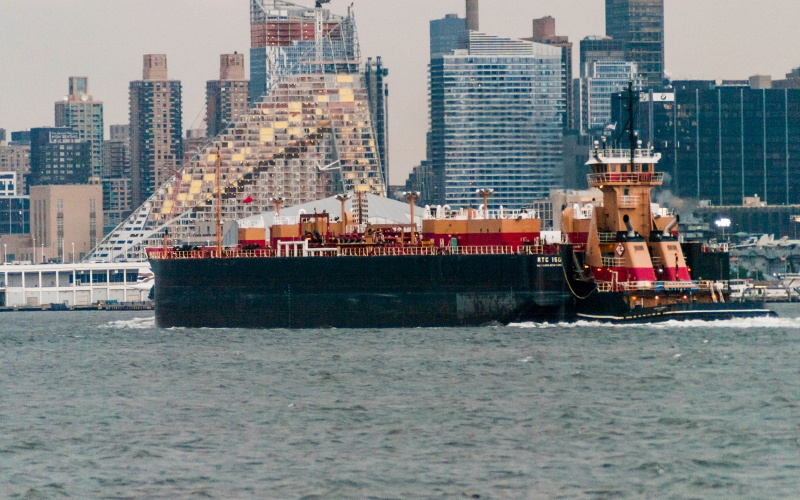The Coast Guard has deferred any decision on creating new barge anchorages on New York’s Hudson River, after months of study and intense political pressure from opponents of the proposal.
A new Hudson River Safety, Navigation and Operations Committee is already one outcome from a pair of big stakeholder meetings the Coast Guard convened at Albany and Poughkeepsie in November 2017.
As for new anchorages, that thorny subject is being put off, for the time being. The Coast Guard had sought to resolve conflicts using the Ports and Waterways Safety Assessment (PAWSA) process, a workshop and dialogue framework that has been used on 58 other waterway systems since the late 1990s.
“Besides our continuing effort to support the stand-up of the HRSC the Coast Guard has not yet made any decisions regarding establishing anchorages or using other waterways management tools to manage navigation risk on the Hudson River,” according to a Coast Guard report released Tuesday. “The Coast Guard will use this PAWSA report, together with other information, to determine whether, and to what extent, regulatory actions are needed.”
The maritime industry initiated the request for new designated anchorage areas between Yonkers and Kingston. Many of those areas were used on an emergency basis during hurricane Sandy in 2012, and industry advocates made the case they should be formalized for better safety on the river.
Environmental groups and riverfront towns objected, fearing an increase in oil shipments from Albany terminals receiving North Dakota crude. Critics enlisted New York state legislators on their side to try blocking the proposal.

A chart from the Hudson River PAWSA report shows environmental, navigation and other concerns along a section of the river from Haverstraw to West Point. Coast Guard image.
Dozens of river interests chimed in on the debate and were represented at the two-day PAWSA. One topic was the region’s dependence on Hudson tank barges for energy delivery. An average 5 million gals. of fuel are shipped daily on the river, the equivalent of about 400 tanker trucks, and there is no truly viable alternative for supplying the region’s needs.
Meanwhile recreational usage has grown steadily, particularly with kayaks and other paddle craft. There are a dozen paddle craft outfitting businesses on the river. Certain reaches, such as the stretch between the Tappan Zee and Bear Mountain bridges, are particularly crowded on summer weekends and holidays.
Along with the new river safety committee, the report says some consensus emerged on the need for other actions, including increasing boating safety education, more clarity from the Coast Guard on anchorage regulation, and implementing Regulated Navigation Areas where anchoring would be banned.
Other suggestions included better information in real time with bridge cameras; requirements for VHF radio use and looking at Automatic Identification System (AIS) blind spots and gaps on the river; and improving emergency spill response capability.
Anchorage issues will continue under study, but “we have no outcome timelines at this time,” the Coast Guard report notes. “Any other substantive rulemaking effort associated with the Hudson River will follow Coast Guard public notice and comment rulemaking procedures to allow for public participation in the process.
Anchorage opponents generated most of the 10,000 written comments submitted to the Coast Guard, and said they will be ready to go back into action again.
“We hope that the public will remain very much engaged in speaking up for the protection of the river as the process moves forward,” Paul Gallay, president of the Riverkeeper environmental group, said in a prepared statement after the Coast Guard issued its report. “Once again, we appreciate the methodical, transparent approach the Coast Guard has taken regarding the ongoing anchorage debate.”




